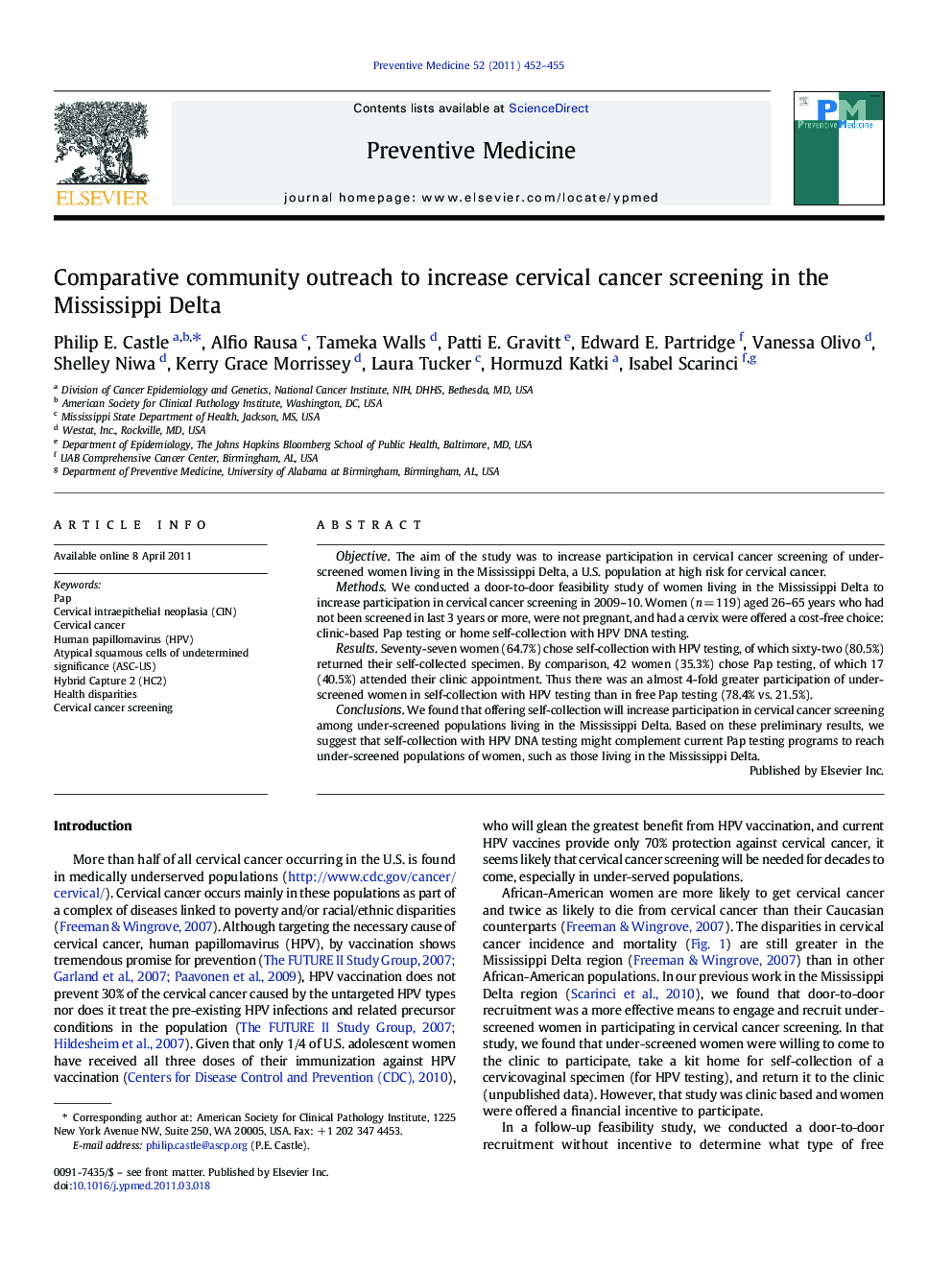| Article ID | Journal | Published Year | Pages | File Type |
|---|---|---|---|---|
| 3100940 | Preventive Medicine | 2011 | 4 Pages |
ObjectiveThe aim of the study was to increase participation in cervical cancer screening of under-screened women living in the Mississippi Delta, a U.S. population at high risk for cervical cancer.MethodsWe conducted a door-to-door feasibility study of women living in the Mississippi Delta to increase participation in cervical cancer screening in 2009–10. Women (n = 119) aged 26–65 years who had not been screened in last 3 years or more, were not pregnant, and had a cervix were offered a cost-free choice: clinic-based Pap testing or home self-collection with HPV DNA testing.ResultsSeventy-seven women (64.7%) chose self-collection with HPV testing, of which sixty-two (80.5%) returned their self-collected specimen. By comparison, 42 women (35.3%) chose Pap testing, of which 17 (40.5%) attended their clinic appointment. Thus there was an almost 4-fold greater participation of under-screened women in self-collection with HPV testing than in free Pap testing (78.4% vs. 21.5%).ConclusionsWe found that offering self-collection will increase participation in cervical cancer screening among under-screened populations living in the Mississippi Delta. Based on these preliminary results, we suggest that self-collection with HPV DNA testing might complement current Pap testing programs to reach under-screened populations of women, such as those living in the Mississippi Delta.
